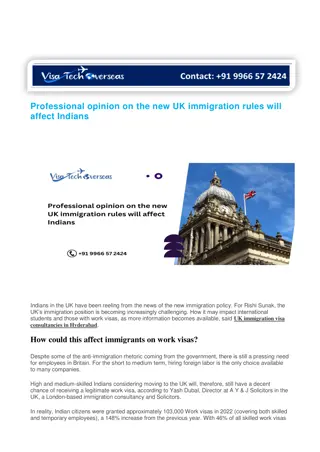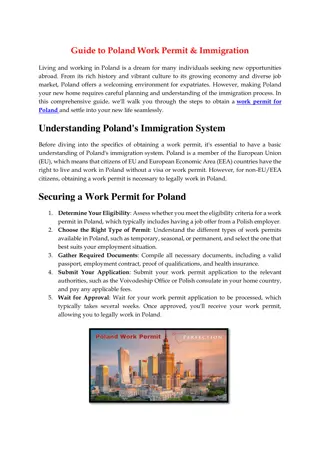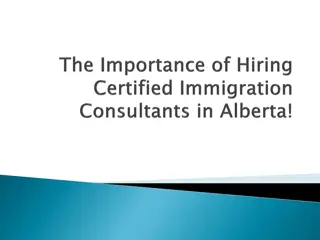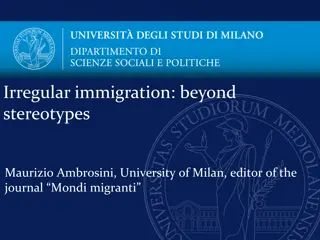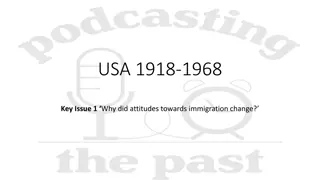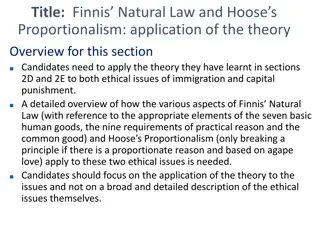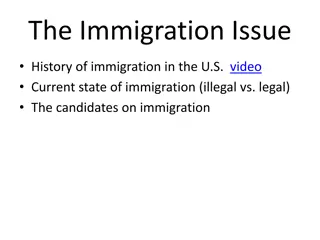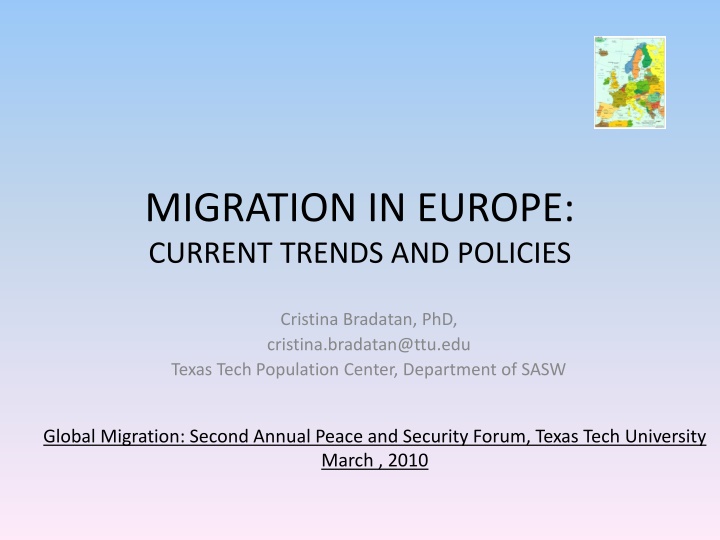
Current Trends in European Immigration
European immigration has evolved over the years with a significant influx of non-European immigrants since the 1960s. The European Union and other European countries have experienced changes in migration patterns, policies, and the composition of migrant groups. This overview touches on the history of EU migration, key statistics, and patterns in immigration to various European nations.
Download Presentation

Please find below an Image/Link to download the presentation.
The content on the website is provided AS IS for your information and personal use only. It may not be sold, licensed, or shared on other websites without obtaining consent from the author. If you encounter any issues during the download, it is possible that the publisher has removed the file from their server.
You are allowed to download the files provided on this website for personal or commercial use, subject to the condition that they are used lawfully. All files are the property of their respective owners.
The content on the website is provided AS IS for your information and personal use only. It may not be sold, licensed, or shared on other websites without obtaining consent from the author.
E N D
Presentation Transcript
MIGRATION IN EUROPE: CURRENT TRENDS AND POLICIES Cristina Bradatan, PhD, cristina.bradatan@ttu.edu Texas Tech Population Center, Department of SASW Global Migration: Second Annual Peace and Security Forum, Texas Tech University March , 2010
Overview Introduction European Union migration Russia and migration Migration in other Europe European migrants in the US Conclusions
European immigration: introduction While there is a long history of people moving back and forth within Europe, it was only after 1960s that Europe started to receive significant numbers of non European immigrants. Units of analysis: European Union (27 states) other Europe Russia
Short history of EU migration European Union has been built as an economic community promoting free trade and labor force circulation between member states (European Coal and Steel Community 1951, European Economic Community, 1957) Guest-worker programs in 1960s Family reunification in 1970s Refugees: European policies Economic boom of Southern European countries (Spain and Italy) in late 1980s The fall of the Berlin s wall and emigration of Eastern Europeans (1990s)
EU migration: numbers On January 1st 2008, 30.8 million foreign citizens lived in EU states 11.3 million of them were EU citizens of another state (Eurostat, 2009). The top three ethnic migrant groups in the EU are: Turkish (2.4 million), Moroccans (1.7 million) Romanians (1.6 million). Although negotiations are currently underway to unify immigration policies within EU, one cannot speak of a homogeneous EU-wide immigration policy. Each country has the freedom to define its own rules.
EU immigration: numbers Among the European Union countries, the Southern ones (mostly Italy and Spain, but also Portugal to a lesser extent) became important destination for immigrants only in the past 10 years. While Germany still have the highest stock on immigrants (7.2 million Germany), Spain has the second largest immigrant population (5.2 million) and Italy has 3.4 million (fifth largest) (Eurostat, 2009).
Old countries of immigration: France and Germany Immigration to France - MAGREB Data problems; estimations Numbers: Germany: Turkish immigration German natives: policies and real life
New countries of immigration: why Southern Europe? Low fertility and old age structure TFR around 1.3 Percent 65+ : 16.8% in Spain and 19.7% in Italy Labor market Segmented: migrants are concentrated in services, construction, agriculture Temporary versus fixed contracts Strong informal economy Estimated to be worth 27% and 20% of the GDP in Italy and Spain respectively
Why Southern Europe? Relatively soft immigration policies Perception of openness due to early imprecision of policy Enforcement focus at Southern border ( Africa ) Low internal controls, easier to overstay visas Periodic regularizations present opportunity for stability Lack of long term government strategy (esp. in Italy) Migration of Roma (Gypsy)
New Europe: migration and aging 2004 and 2007 waves of integration Low fertility Emigration and immigration trends: Poland Bulgaria Romania Hungary Czech Republic
Russia: emigration and immigration Post 1990s reality Russian citizens in former USSR countries Aging population men life expectancy Immigration to Russia Policies toward Russians living abroad: Baltic countries
Other Europe Former Yugoslav countries (Bosnia, Serbia, Croatia, Macedonia) Albania: emigration trends Emigration from Ukraine and Moldova
European born living in the US There are 5 million European born currently living in the US The largest number of European immigrants come from the UK, Germany, Poland and Russia Italy, Greece and Romania send a disproportionately large number of educated immigrants. Most Europeans in the US come to study, work or through diversity visas
Conclusions Changes in trends: Spain and Italy receive now large number of immigrants East to West migration Most migrants in Europe come from Africa or from another European country Emigrants from Europe tend to be mostly skilled workers




